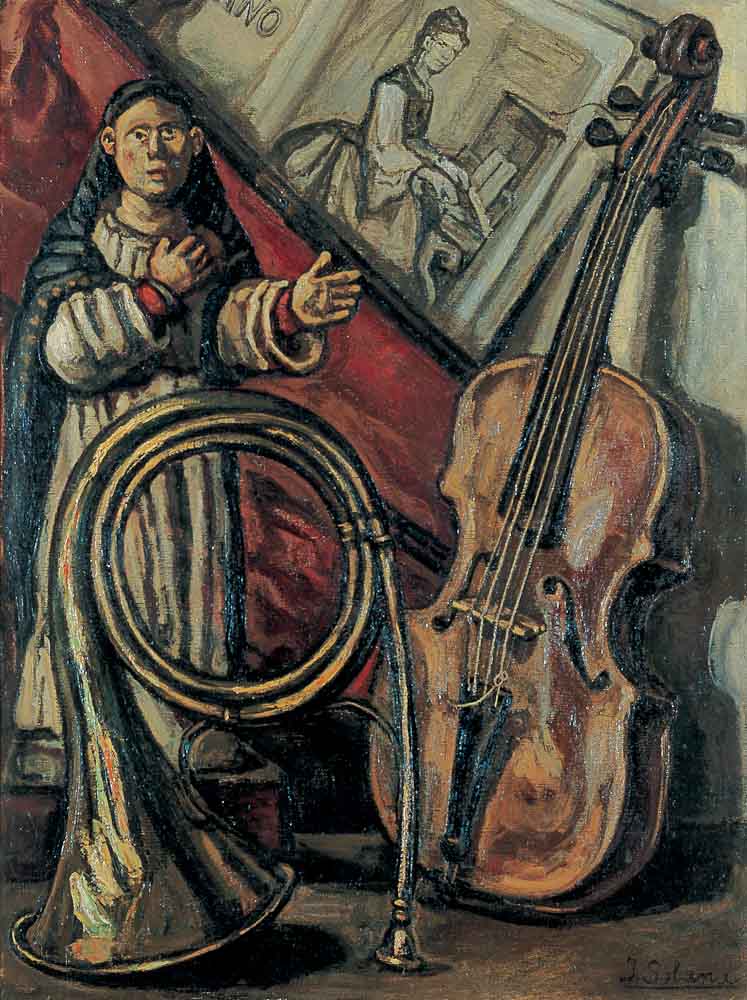
José Gutiérrez Solana (Madrid, 1886-1945)
Still Life with Violin
ca. 1943
WORK INFORMATION
Oil on canvas, 90 x 75 cm
OTHER INFORMATION
Signed at the lower right corner “J. Solana”
Solana frequently painted still lifes, perhaps as a counterpart to his depictions of figures and scenes from everyday life. He focused on objects from his normal surroundings and as such continued the great tradition of the Spanish still life with which he was particularly familiar through the work of Francisco de Goya.
During the avant-garde period the still life was the most important genre within Spanish painting.
For an artist such as Solana the presentation of reality was fundamental to his activities and this subject, devoid of allegorical or mythological content, inevitably interested him and to a certain extent liberated him creatively.
In contrast to the use of extensive empty zones found in traditional still-life painting, Solana superimposed the objects, grouping them together so that they fuse with the setting of the composition.
With its comparatively dark palette, the chromatic harmony and realism in the depiction of the objects seen in this late Still Life with Violin are particularly evident. The artist’s intention seems to have been to pay homage to his mother (who introduced him to music by teaching him the piano) in the form of the female figure in the centre of the composition, which is undoubtedly based on a postcard now in the Solana Archive in the Museo Nacional Centro de Arte Reina Sofía. On the other hand, the painting could be a more general celebration of music: in 1913 Solana’s devotion to this art form led him to temporarily abandon painting, which was the true artistic foundation of his life.
María José Salazar
